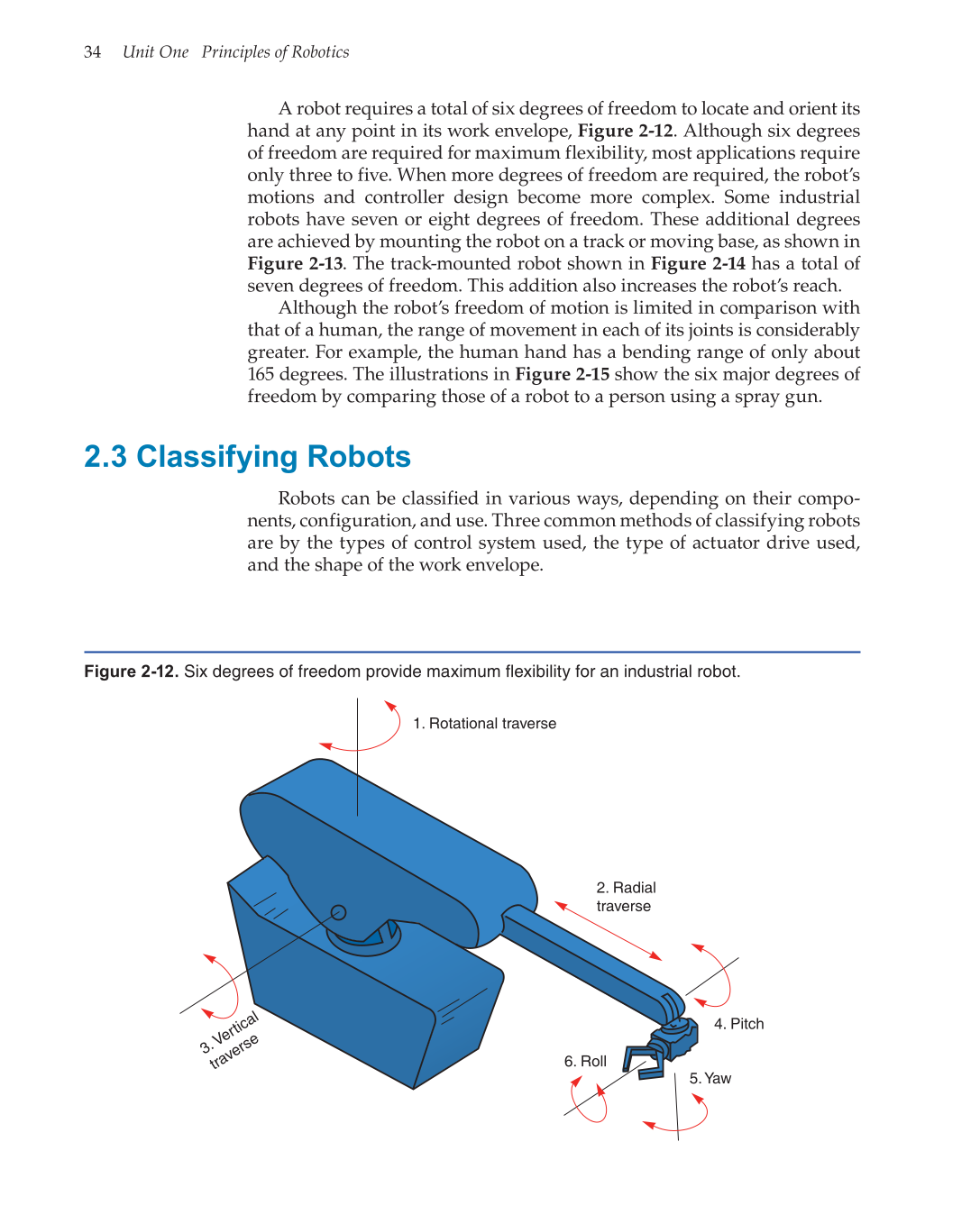34 Unit One Principles of Robotics
A robot requires a total of six degrees of freedom to locate and orient its
hand at any point in its work envelope, Figure 2-12. Although six degrees
of freedom are required for maximum flexibility, most applications require
only three to five. When more degrees of freedom are required, the robot’s
motions and controller design become more complex. Some industrial
robots have seven or eight degrees of freedom. These additional degrees
are achieved by mounting the robot on a track or moving base, as shown in
Figure 2-13. The track-mounted robot shown in Figure 2-14 has a total of
seven degrees of freedom. This addition also increases the robot’s reach.
Although the robot’s freedom of motion is limited in comparison with
that of a human, the range of movement in each of its joints is considerably
greater. For example, the human hand has a bending range of only about
165 degrees. The illustrations in Figure 2-15 show the six major degrees of
freedom by comparing those of a robot to a person using a spray gun.
2.3 Classifying Robots
Robots can be classified in various ways, depending on their compo-
nents, configuration, and use. Three common methods of classifying robots
are by the types of control system used, the type of actuator drive used,
and the shape of the work envelope.
1. Rotational traverse
2. Radial
traverse
4. Pitch
5. Yaw
6. Roll
3. Vertical
traverse
Figure 2-12. Six degrees of freedom provide maximum fl exibility for an industrial robot.
